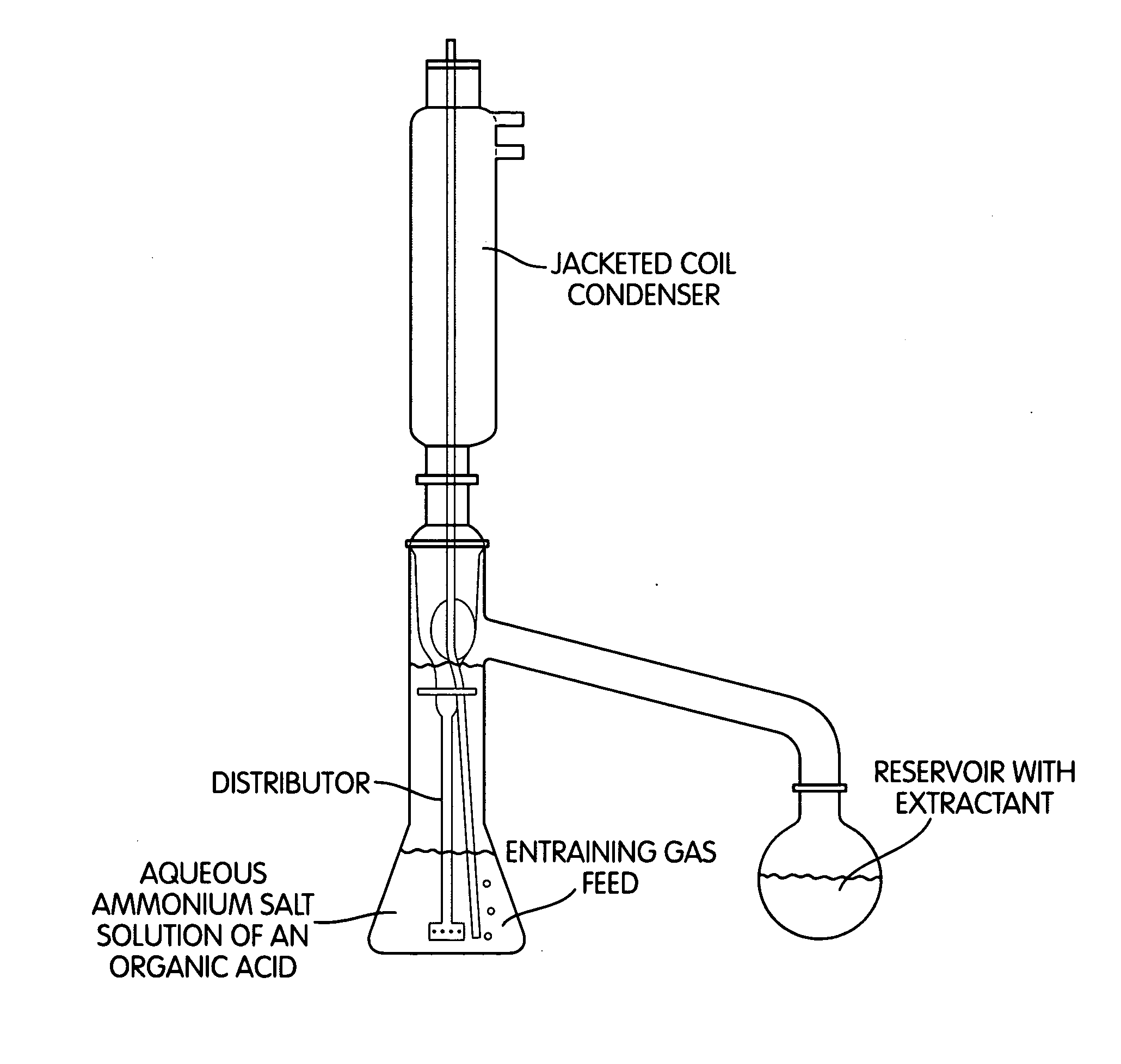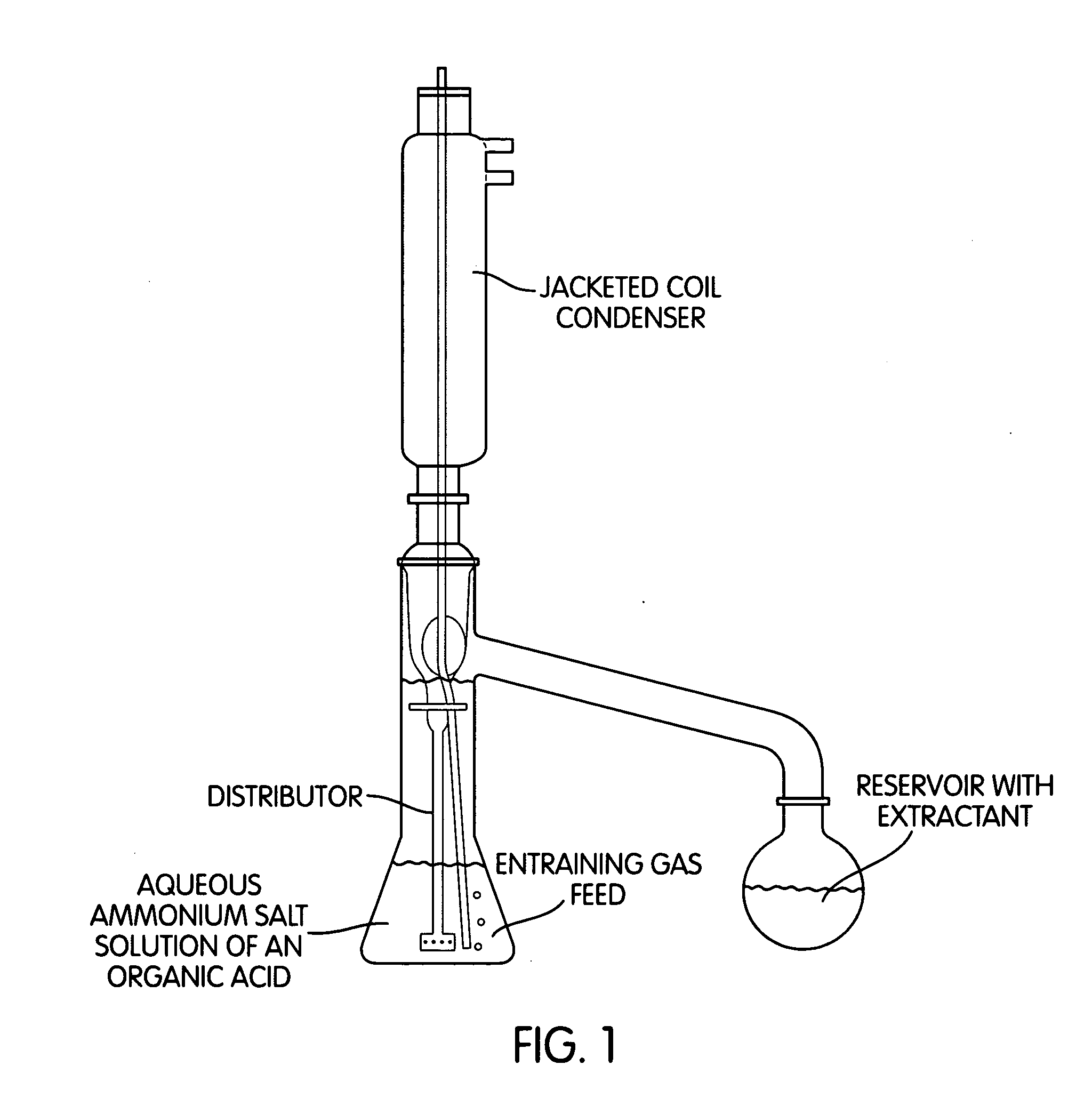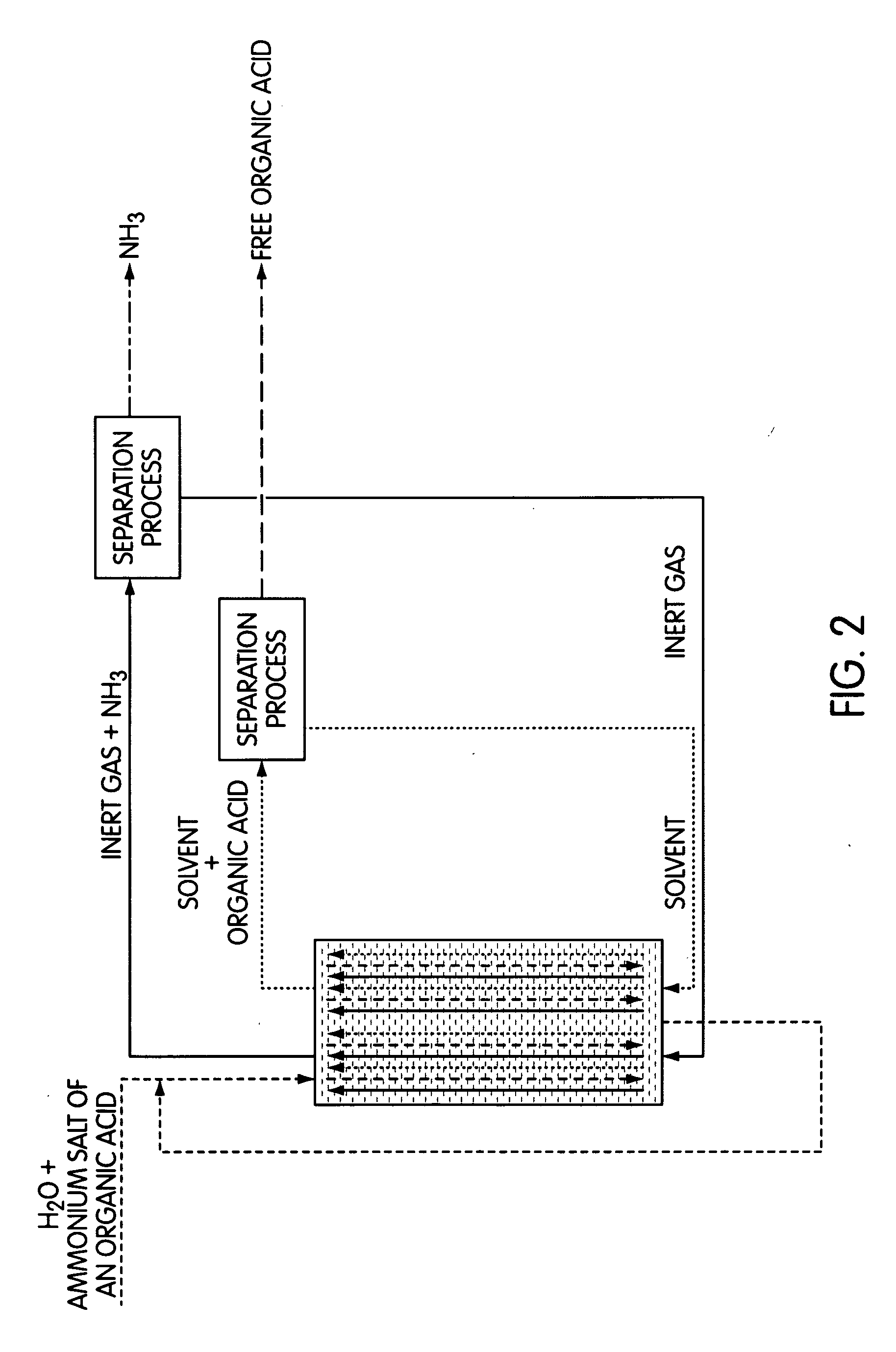Reactive Extraction of Free Organic Acids from the Ammonium Salts Thereof
a free organic acid and ammonium salt technology, applied in the field of alphahydroxycarboxylic, can solve the problems of large amount of ammonium salts, large amount of salts that even have to be disposed of with disposal costs, and difficulty in dumping salts on the market, so as to reduce the capital cost of an industrial plant, the effect of high cost and less expensiv
- Summary
- Abstract
- Description
- Claims
- Application Information
AI Technical Summary
Benefits of technology
Problems solved by technology
Method used
Image
Examples
example 1
[0128]Extraction of MHA from a 10% MHA ammonium salt solution with isobutyl methyl ketone in a rotational perforator at 80° C. (inventive) 17.6 g (90 mmol, M=167.2 g / mol, with a content of 85.1%) of MHA ammonium salt were dissolved in 132.4 g of water. This 10% salt solution was initially charged in the rotational perforator (FIG. 1) and heated to 80° C. The solvent flask was initially charged with 500 g of isobutyl methyl ketone which were heated to boiling (internal temperature 115-117° C.). 6 1 of nitrogen per hour were passed continuously through the aqueous salt solution. During the reaction time, analysis samples were taken from the solvent flask and analysed for dissolved MHA by HPLC. After 90 hours, the extraction was ended and the yellow-coloured isobutyl methyl ketone and the aqueous phase were weighed and analysed by HPLC. 6% of the MHA used was still found in the aqueous phase, 93% in the isobutyl methyl ketone. An ion chromatography analysis of the organic phase showed ...
example 2
[0129]Extraction of MHA from a 10% MHA ammonium salt solution with isobutyl methyl ketone in a rotational perforator at 50° C. (inventive) 16.3 g (90 mmol, M=167.2 g / mol, with a content of 92.3%) of MHA ammonium salt were dissolved in 133.7 g of water. This 10% salt solution was initially charged in the rotational perforator (FIG. 1) and heated to 50° C. The solvent flask was initially charged with 500 g of isobutyl methyl ketone which were heated to boiling (internal temperature 115-117° C.). 6 1 of nitrogen per hour were passed continuously through the aqueous salt solution. During the reaction time, analysis samples were taken from the solvent flask and analysed for dissolved MHA by HPLC. After 90 hours, the extraction was ended and the yellow-coloured isobutyl methyl ketone and the aqueous phase were weighed and analysed by HPLC. 60% of the MHA used was still found in the aqueous phase, 39% in the isobutyl methyl ketone. An ion chromatography analysis of the organic phase showed...
example 3
[0130]Extraction of MHA from a 20% MHA ammonium salt solution with isobutyl methyl ketone in a rotational perforator (inventive) 32.6 g (180 mmol, M=167.2 g / mol, with a content of 92.3%) of MHA ammonium salt were dissolved in 117.4 g of water. This 20% salt solution was initially charged in the rotational perforator (FIG. 1) and heated to 80° C. The solvent flask was initially charged with 500 g of isobutyl methyl ketone which were heated to boiling (internal temperature 115-117° C.). 6 1 of nitrogen per hour were passed continuously through the aqueous salt solution. During the reaction time, analysis samples were taken from the solvent flask and analysed for dissolved MHA by HPLC. After 90 hours, the extraction was ended and the yellow-coloured isobutyl methyl ketone and the aqueous phase were weighed and analysed by HPLC. 28% of the MHA used was still found in the aqueous phase, 71% in the isobutyl methyl ketone. An ion chromatography analysis of the organic phase showed an ammon...
PUM
| Property | Measurement | Unit |
|---|---|---|
| Temperature | aaaaa | aaaaa |
| Temperature | aaaaa | aaaaa |
| Temperature | aaaaa | aaaaa |
Abstract
Description
Claims
Application Information
 Login to View More
Login to View More - R&D
- Intellectual Property
- Life Sciences
- Materials
- Tech Scout
- Unparalleled Data Quality
- Higher Quality Content
- 60% Fewer Hallucinations
Browse by: Latest US Patents, China's latest patents, Technical Efficacy Thesaurus, Application Domain, Technology Topic, Popular Technical Reports.
© 2025 PatSnap. All rights reserved.Legal|Privacy policy|Modern Slavery Act Transparency Statement|Sitemap|About US| Contact US: help@patsnap.com



